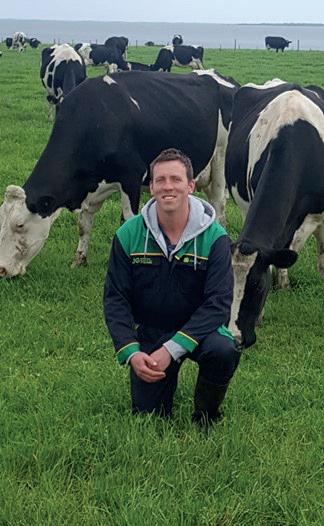
2 minute read
CLAIRE HODGE: Improving connectivity in seed potato supply chains
IMPROVING CONNECTIVITY IN THE SEED POTATO SUPPLY CHAIN
MACROBERT TRUST
Advertisement
CLAIRE HODGE
Claire.Hodge@ahdb.org.uk
The potato has huge potential as a world food. Scottish seed potato producers have been leading the world in their approach to managing risk and producing high quality seed. However, the task of growing high-grade potato seed has become harder in recent years with heightened customer expectations and changing weather patterns. My intention before my Nuffield travels was to better understand supply chain frameworks that help connect the industry by establishing how digital tools and business structures support connectivity in a supply chain. I thought this would focus on the sharing of technical and market information. I chose to travel to emerging markets such as Kenya, India, and South America where the population is high and potatoes offer a great opportunity. In these emerging markets, the number of growers is also high and many of the supply chain frameworks are in their infancy. I compared this to well-established markets in the USA, Netherlands, and the UK, where in contrast numbers of growers are falling and supply chains are multi-level and complex. Throughout my travels, I observed that connectivity was not just about the framework of the supply chain but most importantly a mindset of the people in it. This report looks at examples of connectivity around the world in the potato industry from a farmer in Kenya are teaching other farmers to whom he supplied seed potatoes and training them in planting and managing potato crops, to growers’ groups in Chile sharing expertise and overcoming the challenges in accessing markets, to large businesses in India thriving by accessing global funding. I found that the global potato industry is full of opportunities and constantly expanding in its ability to connect. On reflection, the UK has a complex supply chain that has become technically detailed in order to produce a consistent product. These chains are often linear and not circular and there is a need to connect the seed producer to both researchers at one end of the chain to the consumer at the other so that the whole industry can respond to challenges and change faster. Tools and technologies are being used to enhance communication through the chain and examples of growers leading this change can be seen around the world. The global potato industry has technology readily available to it which can address consumer demands however, this will necessitate redesigning the current structure that Scotland has become expert in. Now is a good time for the Scottish potato industry to establish how potatoes will be grown in the future and access opportunities globally. This will require strong connectivity throughout the industry with a focus on customers, the environment, policy, technology, and the economics of production.






